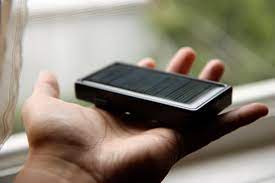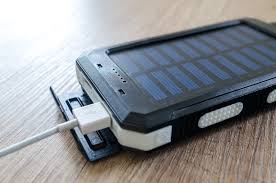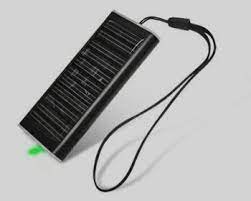
How To Use Solar Chargers For Your Outdoor Activities
By Steven Green | June 24, 2023
As outdoor enthusiasts, we often find ourselves in situations where our electronic devices run out of battery power. This can be frustrating and even dangerous, especially if we rely on these devices for navigation or communication. Thankfully, solar chargers offer a convenient solution to this problem by providing a reliable source of renewable energy that can power our electronics on the go.
In this article, we will explore the world of solar chargers and how they can enhance your outdoor experience. We will begin by explaining how solar chargers work and why they are useful for outdoor activities. From there, we will discuss the different types of solar chargers available and how to choose the right size and capacity for your needs.
We will also provide practical tips for charging your devices with a solar charger and maximizing its efficiency, as well as advice on maintaining and storing your charger. Finally, we will answer some common FAQs about solar chargers and encourage you to embrace eco-friendly power solutions for your outdoor adventures.
Key Takeaways
- Choosing the right size and capacity of solar charger depends on the number of devices, trip duration, and weather conditions.
- Maximizing efficiency requires attention to technical aspects, such as compatible devices and power requirements, and environmental considerations, such as positioning under direct sunlight without obstructions.
- Proper maintenance and storage, including cleaning, avoiding abrasive materials, and storing in cool, dry places away from direct sunlight, is crucial for extending lifespan and ensuring optimal functionality.
- Embracing eco-friendly power solutions, such as solar chargers, can contribute to sustainable travel and eco-tourism, eliminate the need for disposable batteries or carrying extra weight, and save money in the long run.
- Key Takeaways
- Understanding Solar Chargers: How They Work and Why They’re Useful
- Types of Solar Chargers: Which One is Right for You?
- Choosing the Right Size and Capacity for Your Needs
- How to Charge Your Devices with a Solar Charger
- Tips for Maximizing Your Solar Charging Efficiency
- Maintaining and Storing Your Solar Charger
- Common Solar Charger FAQs: Answered
- Embracing Eco-Friendly Power Solutions for Your Outdoor Adventures
- Frequently Asked Questions
- Conclusion
Understanding Solar Chargers: How They Work and Why They’re Useful
The understanding of the functionality and practicality of solar chargers renders them a valuable asset for outdoor enthusiasts seeking to stay connected to technology while experiencing the beauty of nature. Solar chargers utilize photovoltaic cells, which convert sunlight into electricity that can be used to charge electronic devices. This makes them an eco-friendly alternative to traditional power sources such as batteries or generators.
One key advantage of solar chargers is their portability. They are lightweight and easy to carry in a backpack, making them ideal for hiking, camping, or other activities where access to conventional power sources is limited. They also require very little maintenance and have no moving parts, which means they can last for years with minimal upkeep.
However, it’s important to note that there are also limitations to solar chargers. Their effectiveness depends on weather conditions and the amount of sunlight available at any given time. They may not be suitable for areas with limited sunlight or during cloudy days. Future innovations in solar technology may address these issues by improving efficiency and storage capacity.
Understanding the advantages and limitations of solar chargers can help outdoor enthusiasts select the right type for their needs. In the next section, we will explore different types of solar chargers available on the market today and provide guidance on how to choose one that suits your specific requirements.

Types of Solar Chargers: Which One is Right for You?
Selecting the appropriate solar charger that caters to your charging needs and preferences is crucial for ensuring optimal performance during your excursions. When choosing a solar charger, you need to consider several factors such as portability vs durability, cost vs quality, and the type of activities you plan on doing.
Here are three types of solar chargers that might cater to different needs:
- Portable Solar Chargers: These are suitable for backpackers or hikers who need lightweight and compact chargers that can easily fit inside their bags without weighing them down. These chargers usually have smaller capacities but can still charge small devices like smartphones and GPS units.
- Foldable Solar Panels: These are slightly larger than portable solar chargers but offer higher power output since they come with more panels. They’re perfect for car camping or RV trips where space isn’t an issue, and you need to charge bigger devices like laptops or cameras.
- Rugged Solar Chargers: If durability is your top priority, then rugged solar chargers are the way to go. They’re designed to withstand rough outdoor conditions like extreme temperatures, water splashes, or accidental drops. While they may not be as portable as other options, they make up for it in terms of longevity.
Choosing the right size and capacity for your needs will depend on various factors such as how many devices you plan on charging simultaneously, how long you’ll be away from a power source, and the type of weather conditions you expect to encounter.
In the next section, we’ll explore these considerations further and provide tips on selecting the best size and capacity for your specific use case without compromising performance or convenience.

Choosing the Right Size and Capacity for Your Needs
When determining the appropriate size and capacity for your solar charger, several factors should be considered to ensure optimal performance during your excursions. Calculating power is an essential aspect of selecting a solar charger that will deliver sufficient energy to charge all your devices.
You must consider the wattage required by each device and the total amount of energy needed for them to function optimally. Budgeting cost is another crucial factor when choosing the right solar charger size and capacity.
Solar chargers come in different sizes, shapes, and prices; therefore, you must choose one that fits within your budget. However, keep in mind that investing in a high-quality solar charger with ample capacity may save you money in the long run as it will last longer and provide more value over time.
Portability vs. power: striking a balance when selecting a solar charger for your outdoor activities is necessary. If you plan on traveling light or hiking through rough terrain, then selecting a lightweight solar charger with low capacity might be ideal.
On the other hand, if you have more space available or are going car camping where weight isn’t an issue, then opting for a larger-capacity model may be better suited to meet your needs. Ultimately, finding the right balance between portability and power should guide your decision-making process when choosing which type of solar charger to purchase.
To charge your devices with a solar charger effectively requires careful planning and execution. One must understand how much energy their devices require before embarking on any trip so they can calculate how much energy they need from their chosen portable charging system adequately.
How to Charge Your Devices with a Solar Charger
Effective charging of electronic devices with solar technology requires a thorough understanding of the energy needs of each device. This knowledge helps to ensure compatibility between the solar charger and the device to be charged. Before purchasing a solar charger, it is important to research the compatible devices and their power requirements.
When using a solar charger, it is also important to consider portable charging options. Some chargers come equipped with multiple USB ports, allowing for simultaneous charging of various devices. Additionally, some chargers may have a built-in battery bank that can store energy for later use.
These features provide flexibility and convenience in outdoor settings where access to traditional power sources may be limited. To charge your devices effectively with a solar charger, first ensure that the device is compatible with the charger’s power output and voltage range.
Next, connect the device securely using an appropriate cable. It is also recommended to position the panel in direct sunlight for optimal charging efficiency. By following these steps and considering portable charging options, you can maximize your solar charging experience while enjoying your outdoor activities.
In order to further optimize your solar charging efficiency, there are additional tips that can help you get more out of your equipment without having to purchase additional accessories or invest in more expensive models.
These tips will be discussed in detail in the subsequent section on maximizing your solar charging efficiency without compromising on performance or reliability.


Tips for Maximizing Your Solar Charging Efficiency
To optimize the performance of your electronic devices while enjoying the benefits of solar charging technology, there are several practical tips that can help you maximize your solar charging efficiency.
One important factor to consider is charging speed. The amount of energy generated by a solar panel depends on factors such as sunlight intensity and temperature. Therefore, it is advisable to place your solar charger in an area with maximum sunlight exposure. Avoid using long cables or adapters that may reduce the overall efficiency of power transfer.
Another key consideration when using solar chargers is their environmental impact. Solar technology is eco-friendly in comparison to traditional means of generating electricity such as coal-fired plants. However, some materials used in making these gadgets such as lead and cadmium can be harmful if not disposed of properly.
Therefore, it is essential to recycle old or damaged solar panels instead of throwing them into landfills where they can cause harm to the environment. Maximizing your solar charging efficiency requires you to pay attention to both technical aspects and environmental considerations.
By following simple steps such as placing your device in an area with maximum sunlight exposure and recycling old panels, you can enjoy hassle-free outdoor activities while contributing positively towards environmental sustainability.
To ensure even better results from your solar charger, let’s take a look at how maintaining and storing it correctly can help extend its lifespan and functionality…
Maintaining and Storing Your Solar Charger
Maintaining and storing a solar charger properly is crucial for extending its lifespan and ensuring optimal functionality. Here are some essential tips to keep in mind:
- Maintenance essentials:
Regularly cleaning your solar charger can prevent dust accumulation and ensure that it functions at its best. Always use a soft cloth or brush, as abrasive materials may scratch the surface of the panels. Be careful when handling the panels, as any cracks or breaks may affect their efficiency. - Storing tips:
When not in use, store your solar charger in a cool, dry place away from direct sunlight. Extreme temperatures can damage the battery and panel components of your device. Ensure that all cables are neatly wound up to avoid tangling or damage during storage.
By taking care of your solar charger through proper maintenance and storage techniques, you can be sure that it will last longer and perform optimally throughout its lifespan.
As you continue to explore the world of solar charging, you may come across various questions about how to use these devices effectively. In our next section on common Solar Charger FAQs: Answered, we’ll address some of these queries with practical solutions to help you get the most out of your device without encountering any problems along the way.
Common Solar Charger FAQs: Answered
One common question about solar chargers is whether they can charge devices on a cloudy day, similar to how plants still receive sunlight during overcast weather. The answer is yes and no.
While solar panels do require direct sunlight to generate power, some modern-day solar chargers are equipped with technology that allows them to absorb light even when it’s not sunny outside. However, the charging speed will be slower compared to bright sunshine.
Another frequently asked question is about the durability of solar chargers. Solar chargers are built to withstand different weather conditions, but their lifespan depends on various factors such as quality of materials used, frequency of use and maintenance habits.
Taking good care of your charger by cleaning it regularly and storing it correctly will prolong its life. Troubleshooting tips for issues like overcharging or sudden power loss can be easily found in the user manual or online forums.
Embracing eco-friendly power solutions for your outdoor adventures doesn’t have to be complicated or overly expensive. Investing in a high-quality solar charger can benefit both your wallet and the environment in the long run.
By choosing sustainable energy sources over traditional ones, you’re reducing your carbon footprint while enjoying uninterrupted access to electricity wherever you go.
Embracing Eco-Friendly Power Solutions for Your Outdoor Adventures
Investing in sustainable energy solutions for powering your electronic devices during outdoor excursions is an excellent way to reduce your environmental impact and save money in the long run. Embracing eco-friendly power solutions such as solar chargers can significantly contribute to sustainable travel, particularly eco-tourism.
Eco-tourism is a form of responsible travel that focuses on minimizing the negative effects of tourism on the environment while promoting conservation efforts and supporting local communities.
Using solar chargers during outdoor activities not only reduces your carbon footprint but also eliminates the need for disposable batteries or carrying extra weight from portable charging devices. With advancements in technology, solar chargers have become more efficient, lightweight, durable, and affordable.
They are designed to harness solar energy through photovoltaic panels and convert it into usable electricity to charge various electronic devices such as smartphones, cameras, GPS units, and even laptops.
To fully enjoy the benefits of using solar chargers for sustainable travel, here are some practical tips:
- Choose a high-quality solar charger with sufficient charging capacity based on your needs.
- Position the charger under direct sunlight without any obstructions.
- Use a power bank or battery pack to store excess energy for later use.
- Practice responsible waste management by properly disposing of old electronics and batteries instead of leaving them behind in nature.
By incorporating these tips into your outdoor adventures, you can effectively reduce your carbon footprint while enjoying breathtaking landscapes and contributing to eco-conservation efforts worldwide.
Frequently Asked Questions
What kind of devices can be charged with a solar charger?
Solar chargers can charge a wide range of devices, including smartphones, tablets, cameras, GPS devices and portable speakers. The benefits of using solar chargers include reduced carbon footprint and freedom from reliance on traditional power sources. Different types of solar chargers vary in terms of size, capacity and efficiency.
Can a solar charger work in cloudy or rainy weather?
Like a seed needing sunlight to grow, solar chargers rely on direct sunlight to function optimally. Cloudy or rainy weather can reduce their efficiency, but alternative power sources have their own advantages and disadvantages.
How long does it take to fully charge a device with a solar charger?
Factors affecting charging time include the wattage and efficiency of the solar charger, weather conditions, and device battery capacity. Optimizing solar charger usage involves placing it in direct sunlight and avoiding shade or obstacles. Charging times vary depending on these factors.
Are there any safety concerns when using a solar charger?
Precautionary measures should be taken when using a solar charger as overheating risks may occur. It is recommended to avoid exposing the device to direct sunlight and ensure proper ventilation during charging. Regularly inspect the charger for any damage or wear.
Can a solar charger be used indoors or only outdoors?
Solar chargers can be used indoors and outdoors, providing flexibility and convenience. Advantages of indoor charging include consistent power supply and protection from adverse weather conditions. Solar charger portability makes it easy to move between locations.
Conclusion
In conclusion, solar chargers are a reliable and smart solution for powering your outdoor activities. They come in different sizes and capacities to fit your needs, and their eco-friendly nature makes them an excellent choice for environmentally conscious adventurers. By understanding how they work, choosing the right type and size for your devices, maximizing efficiency, and properly maintaining them, you can enjoy uninterrupted power supply while exploring the great outdoors.
For instance, imagine you’re on a camping trip with friends when one of them gets injured. You need to call for help but realize that your phone is out of battery. With a solar charger, you can quickly recharge your phone without having to worry about finding an electrical outlet or running out of power. This real-life example highlights how useful solar chargers can be in emergencies or unexpected situations where access to electricity may be limited or non-existent.
Overall, investing in a quality solar charger is a wise decision that will not only enhance your outdoor experience but also contribute positively to the environment by reducing carbon emissions. So next time you plan an adventure, make sure to pack a solar charger along with other essentials like food and water!
For the 19 must-have solar products go to this page.
